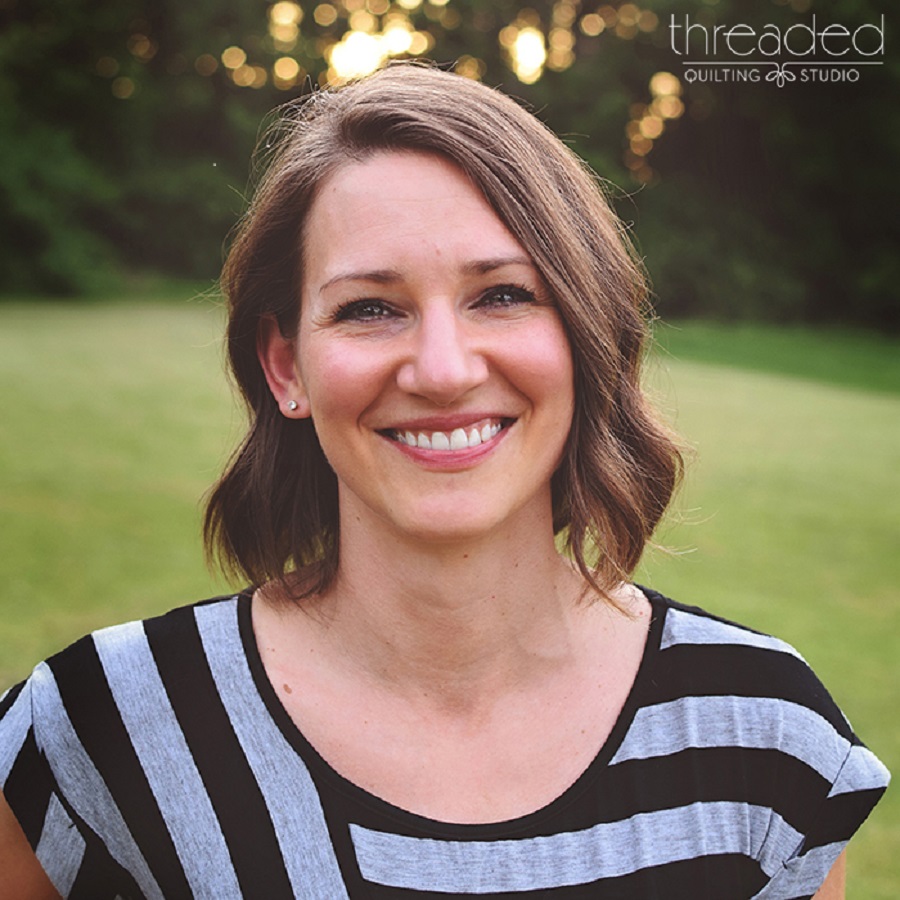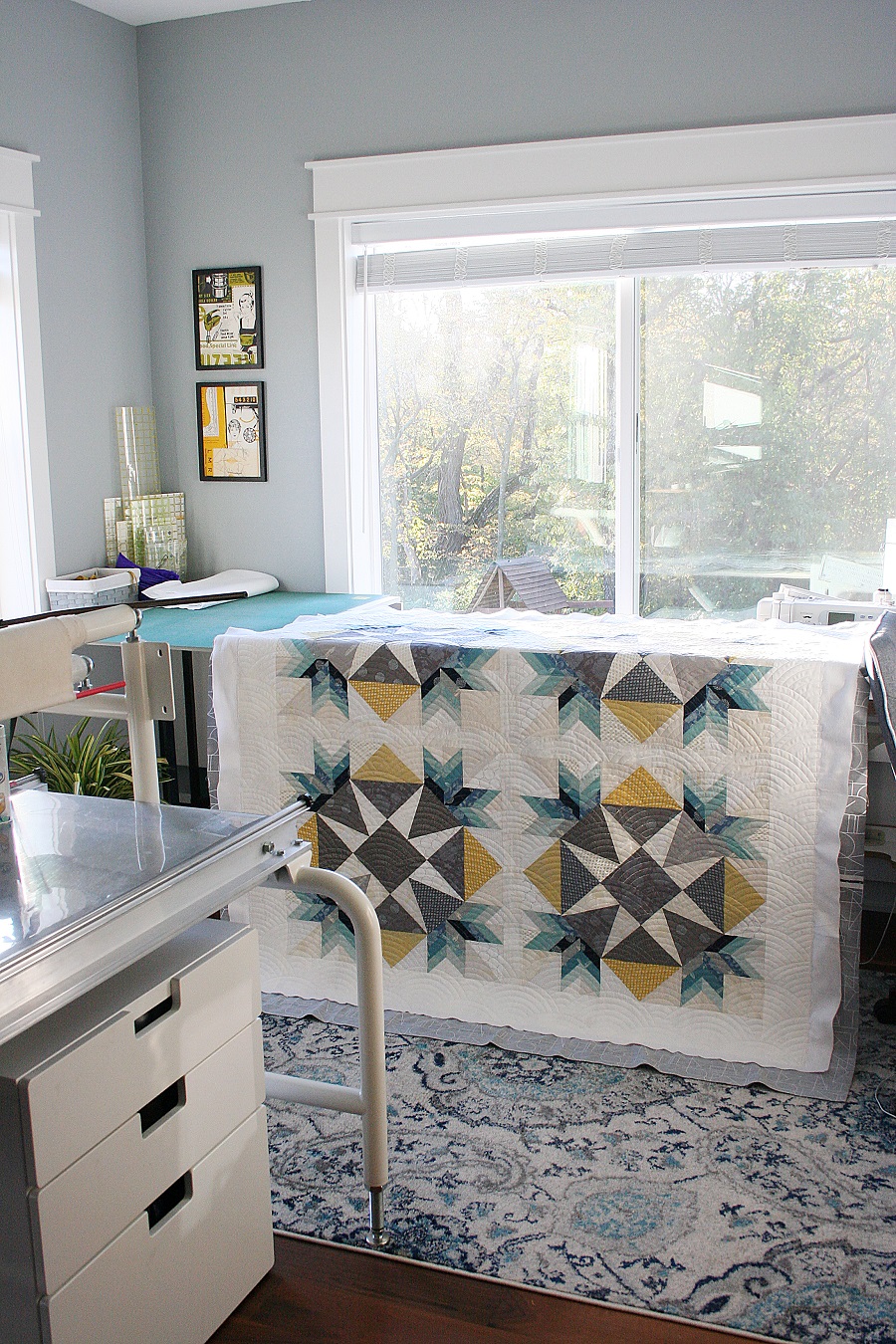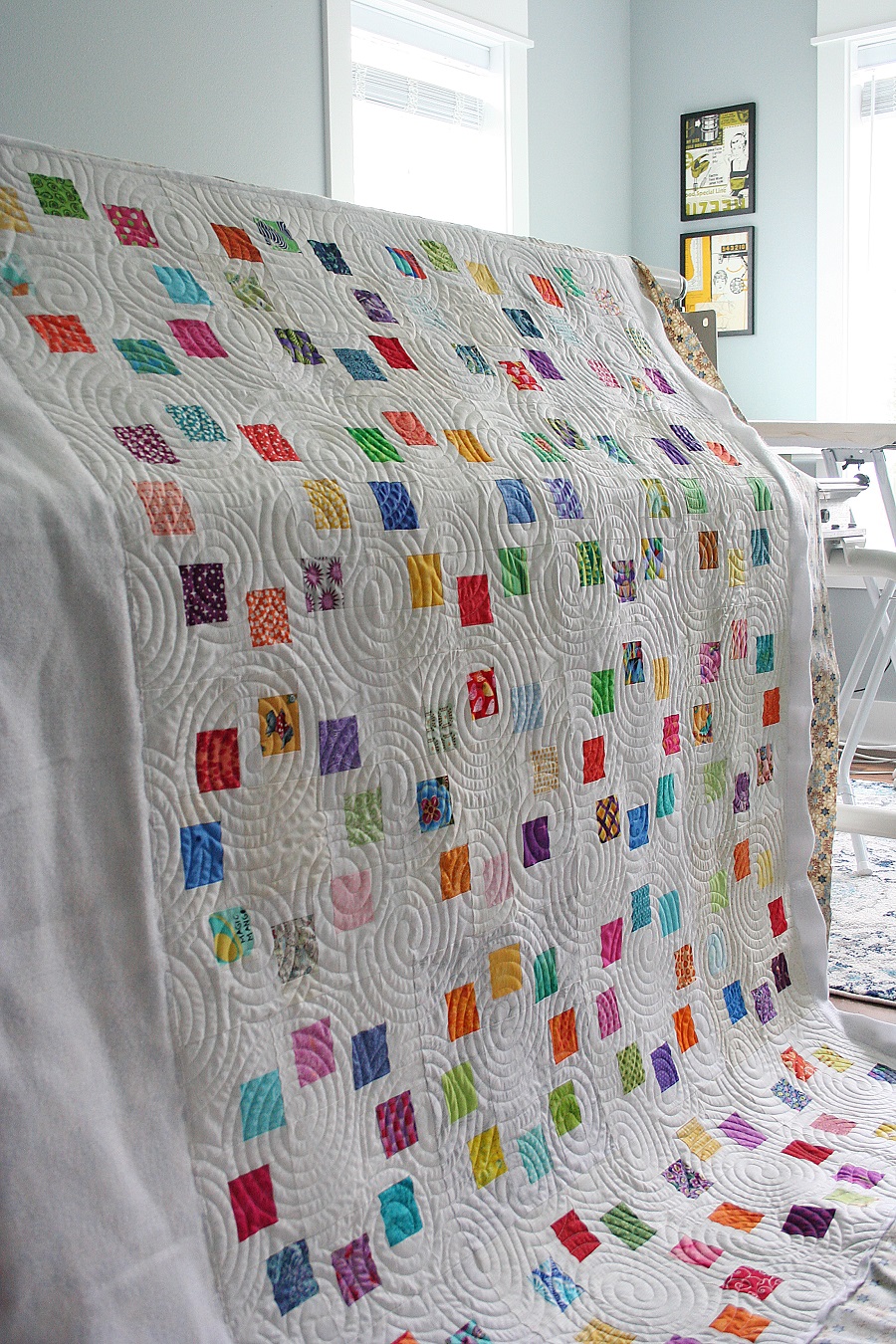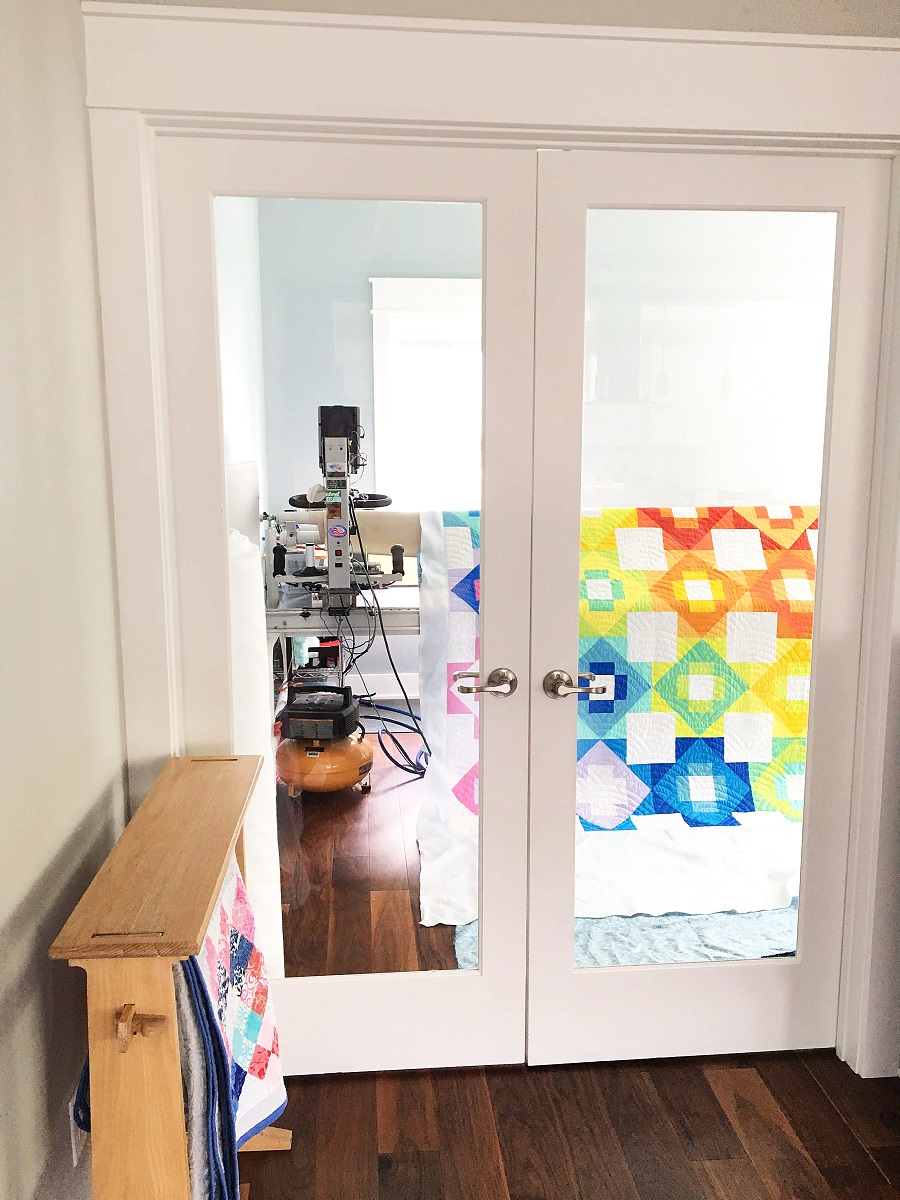Running a longarm quilting business: Q&A with Jessie Zeigler

Jessie Zeigler of Threaded Quilting Studio says one of her goals in life is to help quilters love more people through the gift of quilt making. She is a pattern designer, professional machine quilter and encourager to all. We love seeing her creations combined with her sunny outlook on life.
We touched base with her to ask her a few questions about how she got started and what advice she might have for those who are considering starting their own quilting business.
How did you get into quilting for other people?
I loved quilting on my domestic machine and so the owner of my local quilt shop thought I might enjoy longarm quilting. She paid me to learn how to use hers in order to finish her shop samples. I fell in love with it about two hours into the process. 🙂 That led to her shop customers asking me to quilt for them and at that point, I knew I needed a longarm machine of my own.

How long have you been quilting for others?
On and off (currently on) for six years.
What types of quilting do you most often for your customers?
I quilt pantos exclusively. I did custom quilting for about three years and burned out on it. Edge to edge designs really fits my life right now.
What longarm machine do you use in your business and why did you choose it?
I bought a certified used 2001 Millennium from APQS in 2012. I knew I wanted the large throat space, stitch regulator and channel locks but I wasn’t interested in shiny and new. Through my research, I came to trust the longevity of the machines and was happy with a workhorse. That’s exactly what I got! 🙂 I LOVE my machine!
What is your favorite batting?
Quilters Dream anything.

What is your favorite thread?
Glide. I’m really digging the matte Premosoft #50 threads right now. And I always use the Magna-Glide bobbins.
What is your favorite ruler or gadget right now?
Does my Intelliquilter count? I’m not using rulers much these days with all the panto work.
What are the top three pantograph patterns that you use for your customers?
Baptist Fan E2E pattern from Three Sisters Fabric
Time Warp by Patricia Ritter
Wishbone (really simple interlocking loop design that I made with my Intelliquilter)
What percentage of your customers are local and what percentage of folks mail you quilts? Which do you prefer?
Quilts by mail are slowly overtaking my local folks. I love both and have no preference.
Describe your studio and how you organize your longarm studio.
I just moved into a new house a few months ago! I have a dedicated studio space after being in an unfinished, windowless basement room for the previous 7 years. I’m loving my brightly lit space now! It’s a narrow but long room with glass doors right off my living room on the main level of my home. The builders referred to it as a den or flex space… but I knew better. 😉 It’s short on storage space, so I store fabrics and items I don’t need to access every day in closets (who needs a coat closet?) and in my basement. For me, minimalism is key so that I can move around freely. I also love taking photos of the quilts that I finish for my customers, and I don’t like a lot of extra stuff in the background.

Do you use an accounting software of some sort to keep track of your invoices?
I’m still figuring that out. As my out-of-town customers increase, the more I’m using PayPal to invoice. I track invoices to local quilters through the Numbers program.
What is the best thing about quilting for others?
Delighting them while solving their problem!
What is a downside to quilting for others?
I put a lot of stress on myself to finish their quilts ASAP. I find it difficult to split my time between longarming and pattern writing, which is my other love.
What advice would you give to someone who is thinking of starting a longarm quilting business?
I started out with equipment I could afford and then upgraded (adding the Intelliquilter) over time. Saving up and paying close attention to costs helped me avoid the debt burden and emotional baggage and feelings of obligation that can come along with having to pay for your machine.
What do you wish you knew now about running your business that you didn’t know before?
I thought about pricing in terms of time I was actually stitching at the machine (or supervising the digital quilting). But it’s really so much more than that! It’s answering questions from customers, preparing and loading, fixing issues that come up, photographing finishes, invoicing, communicating when complete, meeting customers or packing the quilts up & mailing them. Not to mention the time I take to share my work on social media and interacting with customers there.
What is something you wish you had in your longarm studio to make things easier?
A shipping department. I will try folding and re-folding a quilt 12 different times to get it to fit into a flat rate box!
Is there anything else you’d like our readers to know about your business or about the machine quilting business in general?
The kind of quilting work you choose matters. I was good at custom quilting so I thought that’s what I should do, even though it slowly drained my batteries. I originally thought if I stopped doing custom work, it meant I shouldn’t do any kind of quilting for others, period. But getting my Intelliquilter and deciding to make the switch to panto only was such a good choice for me. I feel like I’m in total alignment with my business and it makes me so happy! Also, the more I treat the quilts like I would my own (with my customer’s blessing) and share pictures of that on social media, the more I’m attracting the quilts I love aesthetically.
Connect with Jessie on Instagram, Facebook, Pinterest and YouTube.



